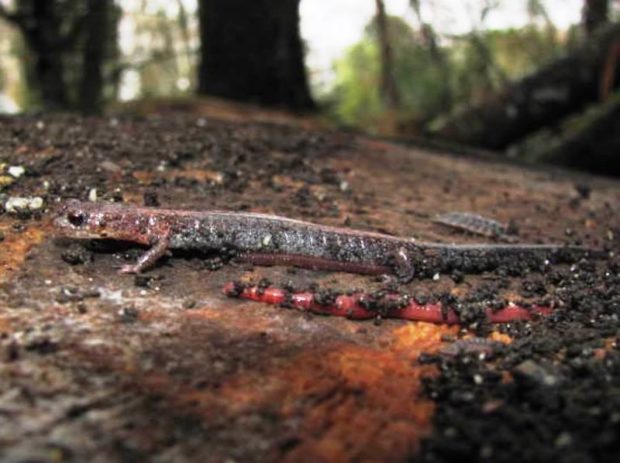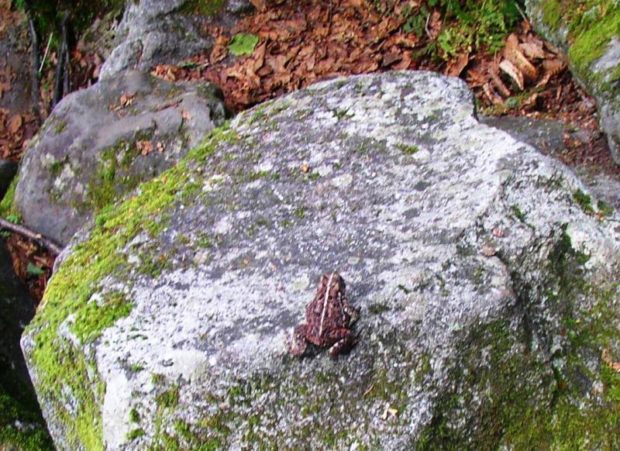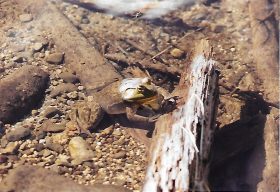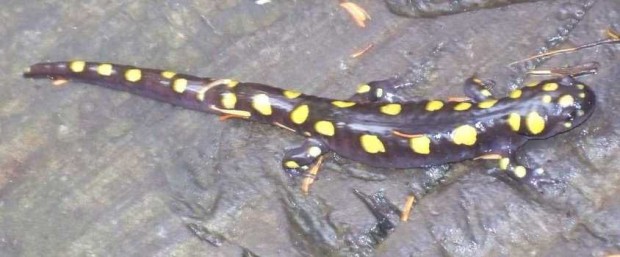
Amphibians, part of Maine’s wildlife population, are cold-blooded vertebrate (having a backbone) animals usually living on land but breeding in water, where their offspring change into adults.
Salamanders
An example of a Maine amphibian is the Spotted Salamander. It breeds in vernal pools (pools that have water in the spring but dry up later in the year). Their habitat may be threatened by clearing or filling of the land to eliminate the vernal pools. This could be the result of road building, clear cut logging, housing or other building development, among other factors.
This Spotted Salamander was found along the Appalachian Trail in the Town of Monson in the fall of 2007.
Frogs
A frog is a frog, of course, of course! Well, not exactly. Among those in Maine are Treefrogs, Pickerel frogs and Wood frogs.
Bullfrogs, such as those shown at Daicey Pond in Baxter State Park, are the largest frogs in New England at almost five inches. While they are yellowish green above the head and back, their size and deep voice distinguishes them from the green frogs.
The smaller green frog measures three inches. They are green about the head, top and under the jaw, with dark spots on the lower back and sides.
Here is a sample from the Cathance River in Topsham to Daicey and Kidney ponds in Baxter Park.
Toads
Toads differ from most frogs because they have dry skin, warts, crests behind the eyes, and glands that glands produce a poisonous secretion that helps the toad defend itself from predators. This substance, called a bufotoxin, can cause death in small animals and allergic reactions in humans. This one was on rock with lichen on the southern Mahoosic Arm trail in Grafton Township.

Toads have other ways to avoid being eaten. If they’re brown or green, they can blend into their surroundings and escape detection. If brightly colored, they warn predators to stay away because they’re poisonous. Toads also puff up in an attempt to look bigger and inedible if a predator is nearby.*
So, dear reader, is this a frog or toad? How did you make your choice? Use REPLY below!
More Videos!
Additional resources
Maine Audubon Society, http://maineaudubon.org/conserve/citsci/v_insert.pdf
National Audubon Society. Field Guide to New England. New York, NY. Knopf. 1998. pp. 267-268.
*National Wildelife Fedration. “Toads.” https://www.nwf.org/Educational-Resources/Wildlife-Guide/Amphibians/Toads (accessed April 19, 2019)


